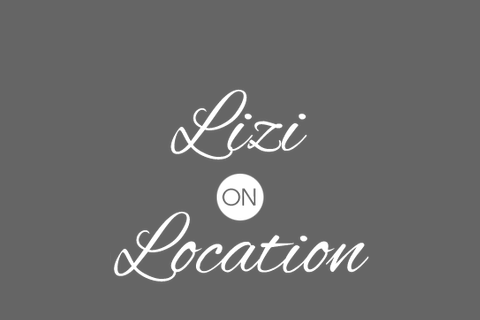Backpacking the Tallest Point In West Virginia
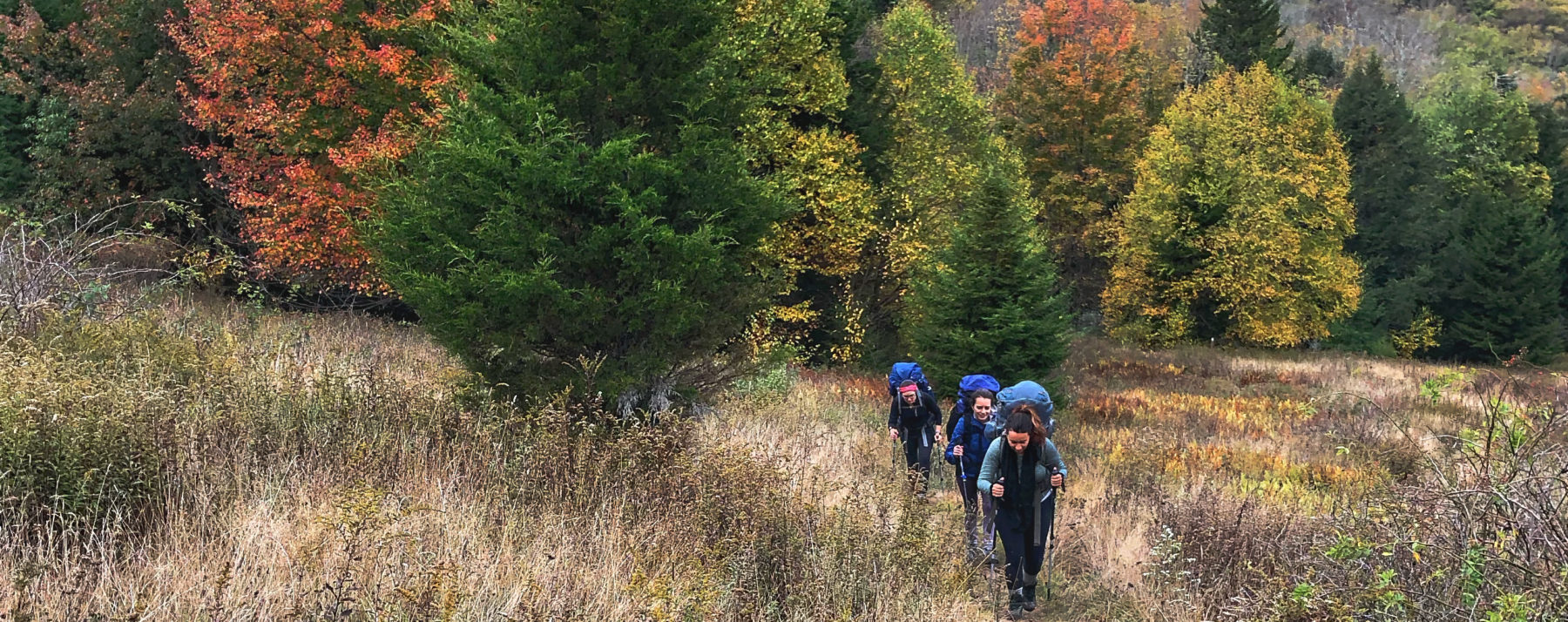
I’ve always said, my hobby is trying new things, so when my good friend asked me to hike 17 miles in West Virginia over a weekend and spend the night under the stars, I said, absolutely.
I’ve now camped a handful of times, but it’s always been car camping. Carrying all of your supplies including food, cookware, tent, clothes, etc is a whole different ballgame. For starters, I had very little of the equipment needed (including a rain cover, which isn’t important until it’s really important). Fortunately, backpackers are very generous, and I was able to borrow everything from the pack to a sleep pad to lightweight cutlary.
I went on the trip with three other women who also live in Washington, DC. We took our time driving to the Monongahela National Forest winding through the backroads and stopping for lunch and visiting a country store. By the time we arrived it was mid-afternoon, which left us just a few hours to gather our stuff, hike in, and set-up camp before sunset. There were a surprising number of campsites within the first three miles of the Huckleberry Trail. All the campsites we saw appeared to be well maintained with fire rings often surrounded by logs/rocks that could be used as seats. 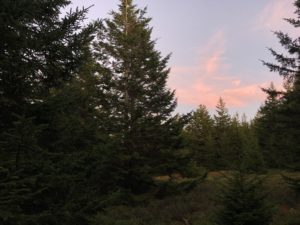
We had two tents between the four of us and spread the burden of carrying shared supplies. Still, lugging everything on your back for a full weekend, including water, gets heavy. It was nice to have a leisurely first day, which proved to be crucial ahead of a sleepless night due to the subfreezing temperatures. We backpacked the first weekend of October, but beginning the trail at Spruce Knob, which is the highest point in West Virginia, means it gets cold.
Once we finally got moving the next morning, we connected to the Lumberjack Trail. Both the first and second day was pretty flat with a series of downhills. About one mile into the Lumberjack, we put down our packs and ventured off trail to find the wreckage of a small plane, which crashed in the 1970s (see video for coordinates). We didn’t touch the pieces out of respect, but did spot crosses made, which we assume were to honor the deceased passengers.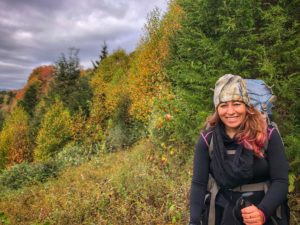
Back on the trail we eventually left the woods and turned onto the High Meadows Trail, where we found just that. Luckily being fall, we didn’t have much problem walking through the thorns and high grass. The views here were some of the best of the trip, not to mention the leaves starting to change colors.
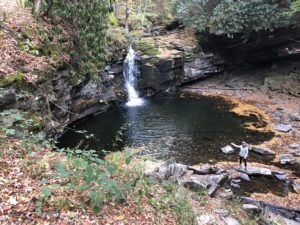 By about mile eight or nine, we found a creek and filled our bottles with purified water through a filter. Little did we know, just a little further down the trail there would be much better running water, even a beautiful waterfall that screamed “Take a photo for the gram!” From this point, a creek paralleled the trail for more than a mile. We crossed a good-sized stream crossing that was pretty calm and low in the fall, but I’ve read can be up to your thighs in the spring. There were campsites scattered up and down the creek, but they fill up pretty quickly. We were still looking for a site by early evening and eventually found one towards the end of the row about 200 yards from the creek.
By about mile eight or nine, we found a creek and filled our bottles with purified water through a filter. Little did we know, just a little further down the trail there would be much better running water, even a beautiful waterfall that screamed “Take a photo for the gram!” From this point, a creek paralleled the trail for more than a mile. We crossed a good-sized stream crossing that was pretty calm and low in the fall, but I’ve read can be up to your thighs in the spring. There were campsites scattered up and down the creek, but they fill up pretty quickly. We were still looking for a site by early evening and eventually found one towards the end of the row about 200 yards from the creek.
We didn’t really hit any hills until our third day when crossing onto the Judy Springs Trail. We had been spoiled by the downhills and spent the next few miles huffing and puffing while lugging our gear upwards. Luckily, our loads were a bit lighter as we had already eaten some of our food. Still, the views of the leaves changing color were gorgeous.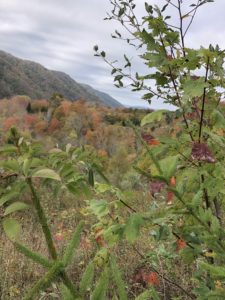
Once we finally made it to the homestretch, the Huckleberry Trail where we initially departed on, we stopped for a quick lunch before the skies opened up. The rain fell, and we kept walking. Remember that rain jacket I didn’t have? Luckily, I never travel without a disposable poncho, which was a lifesaver to cover both me and my bag.
Overall, it was the perfect trail for a beginner like me. It wasn’t terribly steep minus those few miles starting around mile 11. Sure, it was cold, I mean really cold the first night, but you can’t really predict the weather. That being said the landscape was perfect to enjoy the turning of the leaves in the fall, the views were stunning, and the changing landscapes kept everything interesting. It’s hard to believe this peaceful hike was less than a four-hour drive from Washington, DC.
